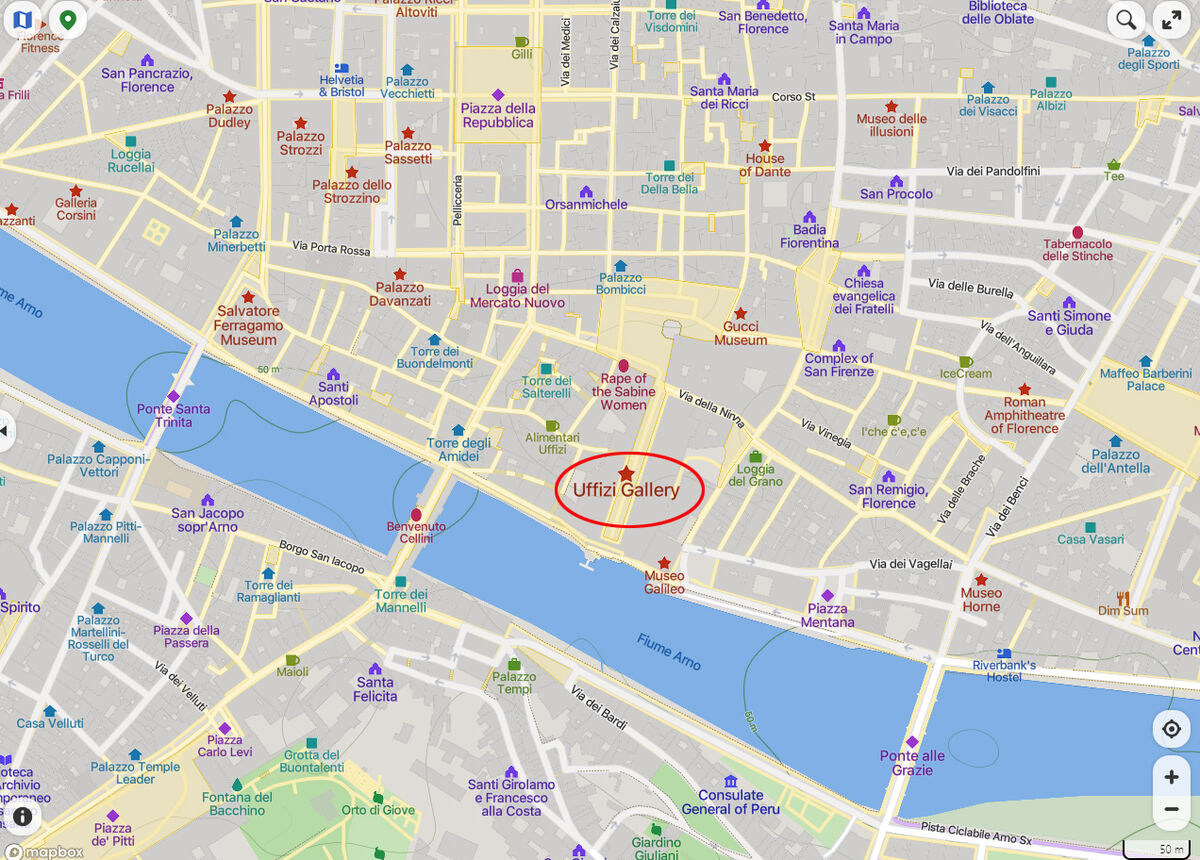Italy: Florence Part 27 - More Uffizi Masterpieces
Aug 25, 2023 14:24:58 #
One of my favorite Italian Renaissance artists is Sandro Botticelli and it was a treat to see his original works on display at the Uffizi. I did throw a few elbows to get some head on views of "The Birth of Venus" or as we called her in Fine Arts 13 - "Venus on the Half Shell".
Alessandro di Mariano di Vanni Filipepi (c. 1445 – May 17, 1510), better known as Sandro Botticelli (/ˌboʊtiˈtʃɛli/, BOH-tee-CHEL-ee, Italian: [ˈsandro bottiˈtʃɛlli]) or simply Botticelli, was an Italian painter of the Early Renaissance. Botticelli's posthumous reputation suffered until the late 19th century, when he was rediscovered by the Pre-Raphaelites who stimulated a reappraisal of his work. Since then, his paintings have been seen to represent the linear grace of late Italian Gothic and some Early Renaissance painting, even though they date from the latter half of the Italian Renaissance period.
In addition to the mythological subjects for which he is best known today, Botticelli painted a wide range of religious subjects (including dozens of renditions of the Madonna and Child, many in the round tondo shape) and also some portraits. His best-known works are The Birth of Venus and Primavera, both in the Uffizi in Florence, which holds many of Botticelli’s works. Botticelli lived all his life in the same neighbourhood of Florence; his only significant times elsewhere were the months he spent painting in Pisa in 1474 and the Sistine Chapel in Rome in 1481–82.
Only one of Botticelli's paintings, the Mystic Nativity (National Gallery, London) is inscribed with a date (1501), but others can be dated with varying degrees of certainty on the basis of archival records, so the development of his style can be traced with some confidence. He was an independent master for all the 1470s, which saw his reputation soar. The 1480s were his most successful decade, the one in which his large mythological paintings were completed along with many of his most famous Madonnas. By the 1490s, his style became more personal and to some extent mannered. His last works show him moving in a direction opposite to that of Leonardo da Vinci (seven years his junior) and the new generation of painters creating the High Renaissance style, and instead returning to a style that many have described as more Gothic or "archaic".
Botticelli was born in the city of Florence in a house in the street still called Borgo Ognissanti. He lived in the same area all his life and was buried in his neighbourhood church called Ognissanti ("All Saints"). Sandro was one of several children to the tanner Mariano di Vanni d'Amedeo Filipepi and his wife Smeralda Filipepi, and the youngest of the four who survived into adulthood. The date of his birth is not known, but his father's tax returns in following years give his age as two in 1447 and thirteen in 1458, meaning he must have been born between 1444 and 1446.
The nickname Botticelli, meaning "little barrel", derives from the nickname of Sandro's brother, Giovanni, who was called Botticello apparently because of his round stature. A document of 1470 refers to Sandro as "Sandro Mariano Botticelli", meaning that he had fully adopted the name.
In 1481, Pope Sixtus IV summoned Botticelli and other prominent Florentine and Umbrian artists to fresco the walls of the newly completed Sistine Chapel. This large project was to be the main decoration of the chapel. Most of the frescos remain but are greatly overshadowed and disrupted by Michelangelo's work of the next century, as some of the earlier frescos were destroyed to make room for his paintings. The Florentine contribution is thought to be part of a peace deal between Lorenzo Medici and the papacy. After Sixtus was implicated in the Pazzi conspiracy hostilities had escalated into excommunication for Lorenzo and other Florentine officials and a small "Pazzi War".
Mythological subjects of the 1480s
The masterpieces Primavera (c. 1482) and The Birth of Venus (c. 1485) are not a pair, but are inevitably discussed together; both are in the Uffizi. They are among the most famous paintings in the world, and icons of the Italian Renaissance. As depictions of subjects from classical mythology on a very large scale they were virtually unprecedented in Western art since classical antiquity. Together with the smaller and less celebrated Venus and Mars and Pallas and the Centaur, they have been endlessly analysed by art historians, with the main themes being: the emulation of ancient painters and the context of wedding celebrations, the influence of Renaissance Neo-Platonism, and the identity of the commissioners and possible models for the figures.
Though all carry differing degrees of complexity in their meanings, they also have an immediate visual appeal that accounts for their enormous popularity. All show dominant and beautiful female figures in an idyllic world of feeling, with a sexual element. Continuing scholarly attention mainly focuses on the poetry and philosophy of contemporary Renaissance humanists. The works do not illustrate particular texts; rather, each relies upon several texts for its significance. Their beauty was characterized by Vasari as exemplifying "grace" and by John Ruskin as possessing linear rhythm. The pictures feature Botticelli's linear style at its most effective, emphasized by the soft continual contours and pastel colours.
The Primavera and the Birth were both seen by Vasari in the mid-16th century at the Villa di Castello, owned from 1477 by Lorenzo di Pierfrancesco de' Medici, and until the publication in 1975 of a Medici inventory of 1499, it was assumed that both works were painted specifically for the villa. Recent scholarship suggests otherwise: the Primavera was painted for Lorenzo di Pierfrancesco's townhouse in Florence, and The Birth of Venus was commissioned by someone else for a different site.
Botticelli painted only a small number of mythological subjects, but these are now probably his best known works. A much smaller panel than those discussed before is his Venus and Mars in the National Gallery, London. This was of a size and shape to suggest that it was a spalliera, a painting made to fitted into either furniture, or more likely in this case, wood panelling. The wasps buzzing around Mars' head suggest that it may have been painted for a member of his neighbours the Vespucci family, whose name means "little wasps" in Italian, and who featured wasps in their coat of arms. Mars lies asleep, presumably after lovemaking, while Venus watches as infant satyrs play with his military gear, and one tries to rouse him by blowing a conch shell in his ear. The painting was no doubt given to celebrate a marriage, and decorate the bedchamber.
Three of these four large mythologies feature Venus, a central figure in Renaissance Neoplatonism, which gave divine love as important a place in its philosophy as did Christianity. The fourth, Pallas and the Centaur is clearly connected with the Medici by the symbol on Pallas' dress. The two figures are roughly life-size, and a number of specific personal, political or philosophic interpretations have been proposed to expand on the basic meaning of the submission of passion to reason.
The Medicis
Botticelli became associated by historians with the Florentine School under the patronage of Lorenzo de' Medici, a movement historians would later characterize as a "golden age".[98] The Medici family were effective rulers of Florence, which was nominally a republic, throughout Botticelli's lifetime up to 1494, when the main branch were expelled. Lorenzo il Magnifico became the head of the family in 1469, just around the time Botticelli started his own workshop. He was a great patron of both the visual and literary arts, and encouraged and financed the humanist and Neoplatonist circle from which much of the character of Botticelli's mythological painting seems to come. In general Lorenzo does not seem to have commissioned much from Botticelli, preferring Pollaiuolo and others,[99] although views on this differ.[100] A Botticello who was
probably Sandro's brother Giovanni was close to Lorenzo.
https://en.wikipedia.org/wiki/Sandro_Botticelli
For more images from The Uffizi, please see my previous post:
https://www.uglyhedgehog.com/t-784147-1.html#14117372
I hope you enjoy these images as well as my brief art history lesson!
Mark
Alessandro di Mariano di Vanni Filipepi (c. 1445 – May 17, 1510), better known as Sandro Botticelli (/ˌboʊtiˈtʃɛli/, BOH-tee-CHEL-ee, Italian: [ˈsandro bottiˈtʃɛlli]) or simply Botticelli, was an Italian painter of the Early Renaissance. Botticelli's posthumous reputation suffered until the late 19th century, when he was rediscovered by the Pre-Raphaelites who stimulated a reappraisal of his work. Since then, his paintings have been seen to represent the linear grace of late Italian Gothic and some Early Renaissance painting, even though they date from the latter half of the Italian Renaissance period.
In addition to the mythological subjects for which he is best known today, Botticelli painted a wide range of religious subjects (including dozens of renditions of the Madonna and Child, many in the round tondo shape) and also some portraits. His best-known works are The Birth of Venus and Primavera, both in the Uffizi in Florence, which holds many of Botticelli’s works. Botticelli lived all his life in the same neighbourhood of Florence; his only significant times elsewhere were the months he spent painting in Pisa in 1474 and the Sistine Chapel in Rome in 1481–82.
Only one of Botticelli's paintings, the Mystic Nativity (National Gallery, London) is inscribed with a date (1501), but others can be dated with varying degrees of certainty on the basis of archival records, so the development of his style can be traced with some confidence. He was an independent master for all the 1470s, which saw his reputation soar. The 1480s were his most successful decade, the one in which his large mythological paintings were completed along with many of his most famous Madonnas. By the 1490s, his style became more personal and to some extent mannered. His last works show him moving in a direction opposite to that of Leonardo da Vinci (seven years his junior) and the new generation of painters creating the High Renaissance style, and instead returning to a style that many have described as more Gothic or "archaic".
Botticelli was born in the city of Florence in a house in the street still called Borgo Ognissanti. He lived in the same area all his life and was buried in his neighbourhood church called Ognissanti ("All Saints"). Sandro was one of several children to the tanner Mariano di Vanni d'Amedeo Filipepi and his wife Smeralda Filipepi, and the youngest of the four who survived into adulthood. The date of his birth is not known, but his father's tax returns in following years give his age as two in 1447 and thirteen in 1458, meaning he must have been born between 1444 and 1446.
The nickname Botticelli, meaning "little barrel", derives from the nickname of Sandro's brother, Giovanni, who was called Botticello apparently because of his round stature. A document of 1470 refers to Sandro as "Sandro Mariano Botticelli", meaning that he had fully adopted the name.
In 1481, Pope Sixtus IV summoned Botticelli and other prominent Florentine and Umbrian artists to fresco the walls of the newly completed Sistine Chapel. This large project was to be the main decoration of the chapel. Most of the frescos remain but are greatly overshadowed and disrupted by Michelangelo's work of the next century, as some of the earlier frescos were destroyed to make room for his paintings. The Florentine contribution is thought to be part of a peace deal between Lorenzo Medici and the papacy. After Sixtus was implicated in the Pazzi conspiracy hostilities had escalated into excommunication for Lorenzo and other Florentine officials and a small "Pazzi War".
Mythological subjects of the 1480s
The masterpieces Primavera (c. 1482) and The Birth of Venus (c. 1485) are not a pair, but are inevitably discussed together; both are in the Uffizi. They are among the most famous paintings in the world, and icons of the Italian Renaissance. As depictions of subjects from classical mythology on a very large scale they were virtually unprecedented in Western art since classical antiquity. Together with the smaller and less celebrated Venus and Mars and Pallas and the Centaur, they have been endlessly analysed by art historians, with the main themes being: the emulation of ancient painters and the context of wedding celebrations, the influence of Renaissance Neo-Platonism, and the identity of the commissioners and possible models for the figures.
Though all carry differing degrees of complexity in their meanings, they also have an immediate visual appeal that accounts for their enormous popularity. All show dominant and beautiful female figures in an idyllic world of feeling, with a sexual element. Continuing scholarly attention mainly focuses on the poetry and philosophy of contemporary Renaissance humanists. The works do not illustrate particular texts; rather, each relies upon several texts for its significance. Their beauty was characterized by Vasari as exemplifying "grace" and by John Ruskin as possessing linear rhythm. The pictures feature Botticelli's linear style at its most effective, emphasized by the soft continual contours and pastel colours.
The Primavera and the Birth were both seen by Vasari in the mid-16th century at the Villa di Castello, owned from 1477 by Lorenzo di Pierfrancesco de' Medici, and until the publication in 1975 of a Medici inventory of 1499, it was assumed that both works were painted specifically for the villa. Recent scholarship suggests otherwise: the Primavera was painted for Lorenzo di Pierfrancesco's townhouse in Florence, and The Birth of Venus was commissioned by someone else for a different site.
Botticelli painted only a small number of mythological subjects, but these are now probably his best known works. A much smaller panel than those discussed before is his Venus and Mars in the National Gallery, London. This was of a size and shape to suggest that it was a spalliera, a painting made to fitted into either furniture, or more likely in this case, wood panelling. The wasps buzzing around Mars' head suggest that it may have been painted for a member of his neighbours the Vespucci family, whose name means "little wasps" in Italian, and who featured wasps in their coat of arms. Mars lies asleep, presumably after lovemaking, while Venus watches as infant satyrs play with his military gear, and one tries to rouse him by blowing a conch shell in his ear. The painting was no doubt given to celebrate a marriage, and decorate the bedchamber.
Three of these four large mythologies feature Venus, a central figure in Renaissance Neoplatonism, which gave divine love as important a place in its philosophy as did Christianity. The fourth, Pallas and the Centaur is clearly connected with the Medici by the symbol on Pallas' dress. The two figures are roughly life-size, and a number of specific personal, political or philosophic interpretations have been proposed to expand on the basic meaning of the submission of passion to reason.
The Medicis
Botticelli became associated by historians with the Florentine School under the patronage of Lorenzo de' Medici, a movement historians would later characterize as a "golden age".[98] The Medici family were effective rulers of Florence, which was nominally a republic, throughout Botticelli's lifetime up to 1494, when the main branch were expelled. Lorenzo il Magnifico became the head of the family in 1469, just around the time Botticelli started his own workshop. He was a great patron of both the visual and literary arts, and encouraged and financed the humanist and Neoplatonist circle from which much of the character of Botticelli's mythological painting seems to come. In general Lorenzo does not seem to have commissioned much from Botticelli, preferring Pollaiuolo and others,[99] although views on this differ.[100] A Botticello who was
probably Sandro's brother Giovanni was close to Lorenzo.
https://en.wikipedia.org/wiki/Sandro_Botticelli
For more images from The Uffizi, please see my previous post:
https://www.uglyhedgehog.com/t-784147-1.html#14117372
I hope you enjoy these images as well as my brief art history lesson!
Mark
The Birth of Venus is undoubtedly one of the world’s most famous and appreciated works of art was painted by Sandro Botticelli between 1482 and 1485
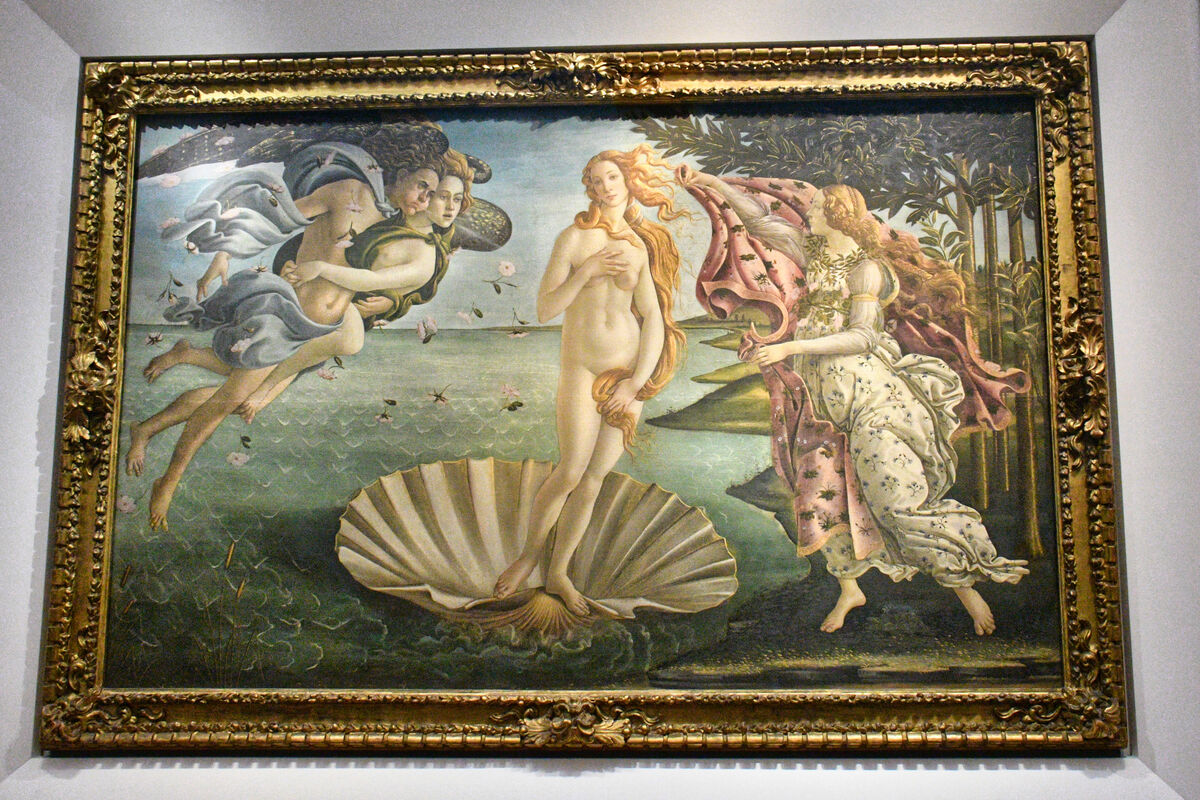
(Download)
Primavera is a large panel painting in tempera paint by the Italian Renaissance painter Sandro Botticelli made in the late 1470s or early 1480s
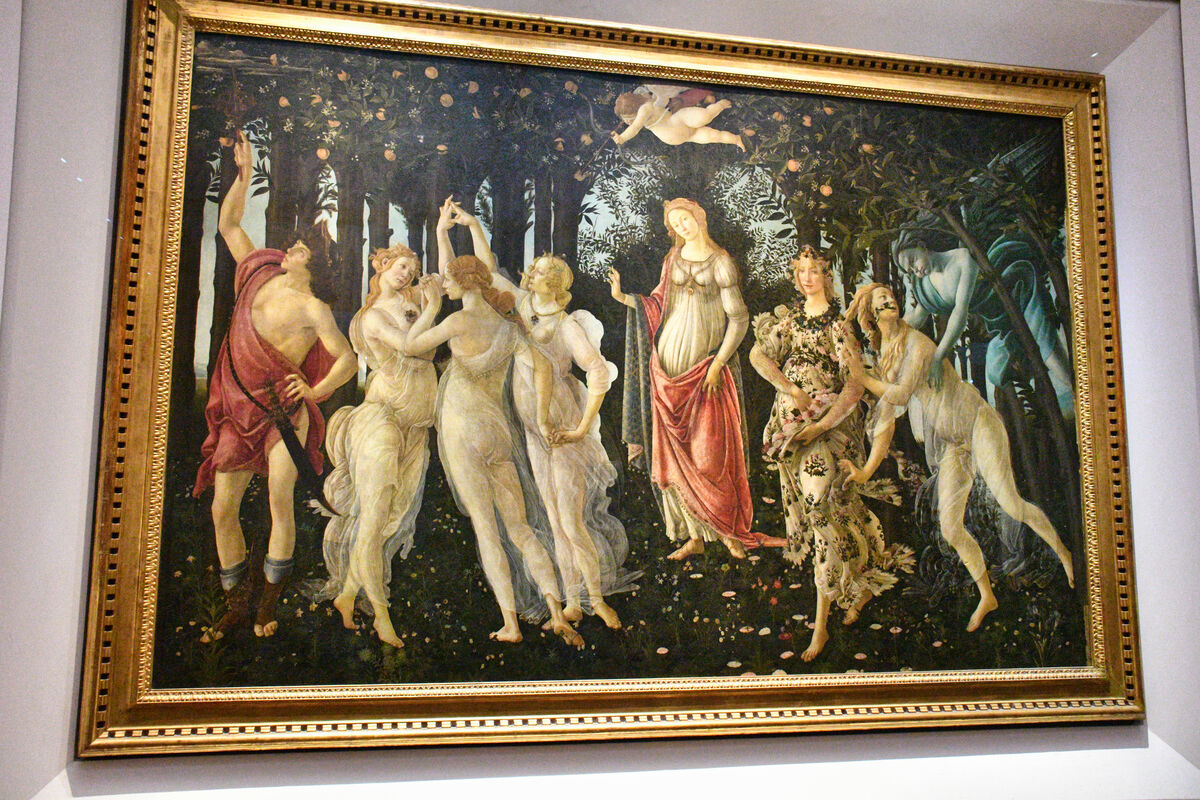
(Download)
Sandro Botticelli - Madonna of the Pomegrante tempera on wood 1487
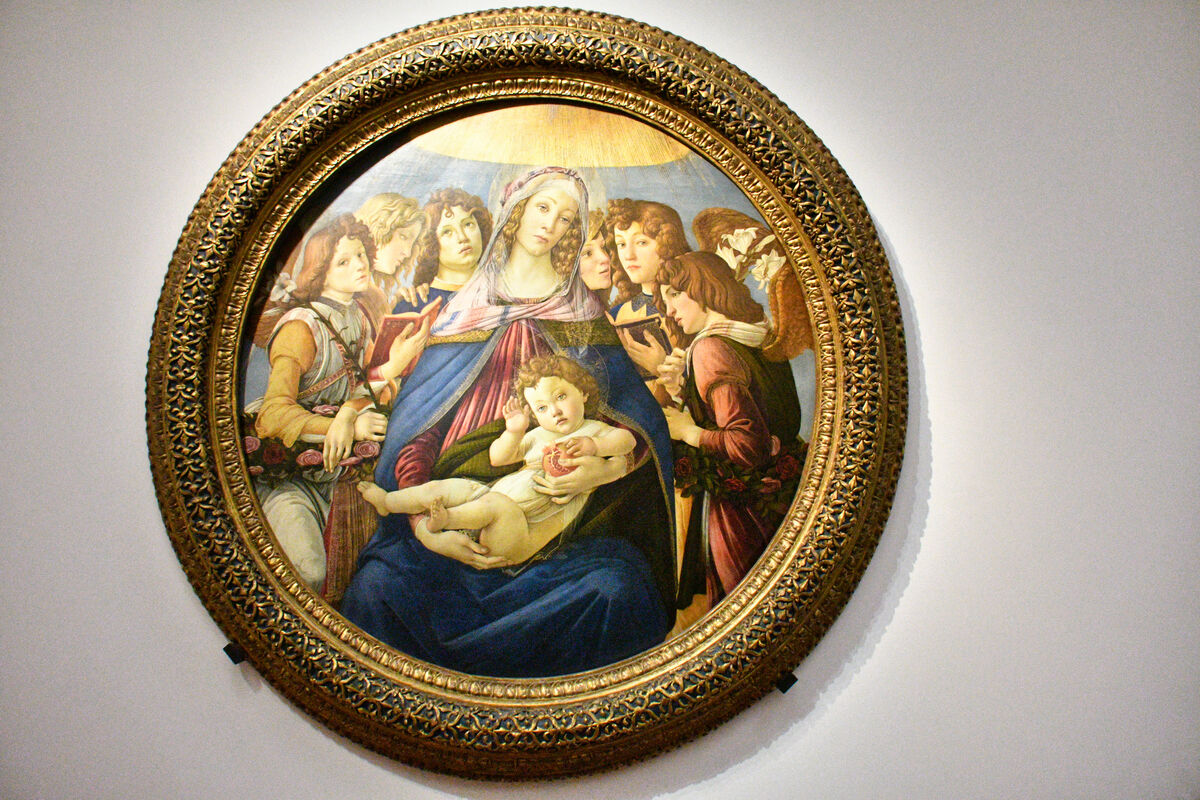
(Download)
Annunciation Léonardo Da Vinci 1472
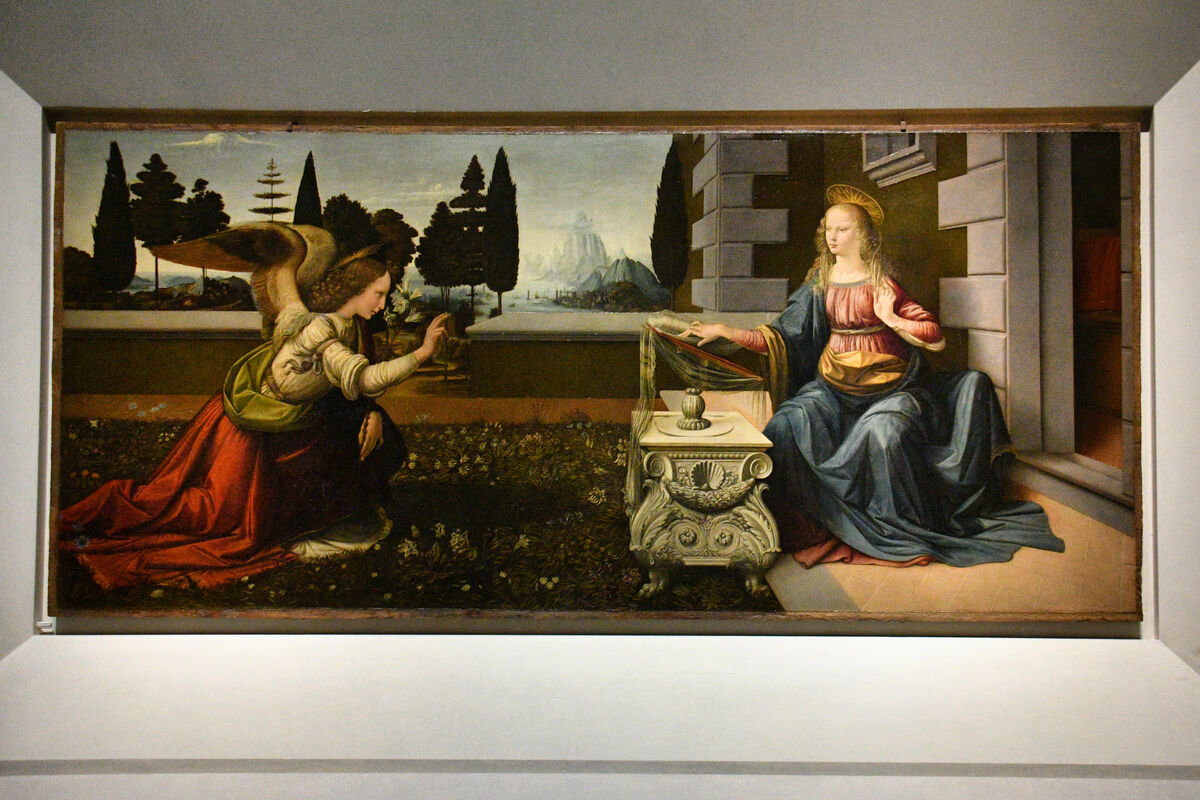
(Download)
The Baptism of Christ is an oil-on-panel painting finished around 1475 in the studio of the Italian Renaissance painter Andrea del Verrocchio and generally ascribed to him and his pupil Leonardo da Vinci.
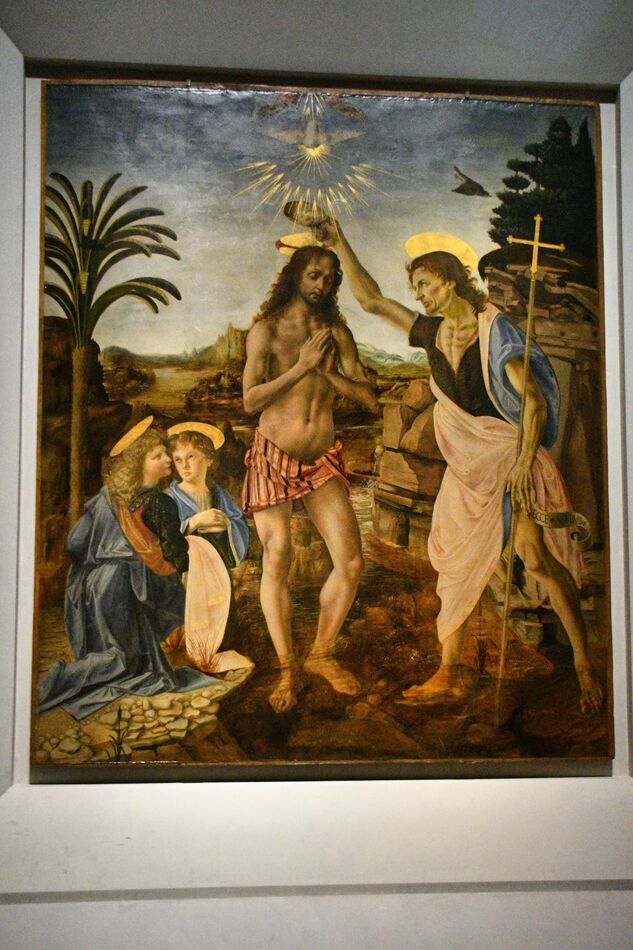
(Download)
Leonardo Da Vinci Adoration of the Magi done in 1481 - unfinished since Leonardo left Florence for Milan
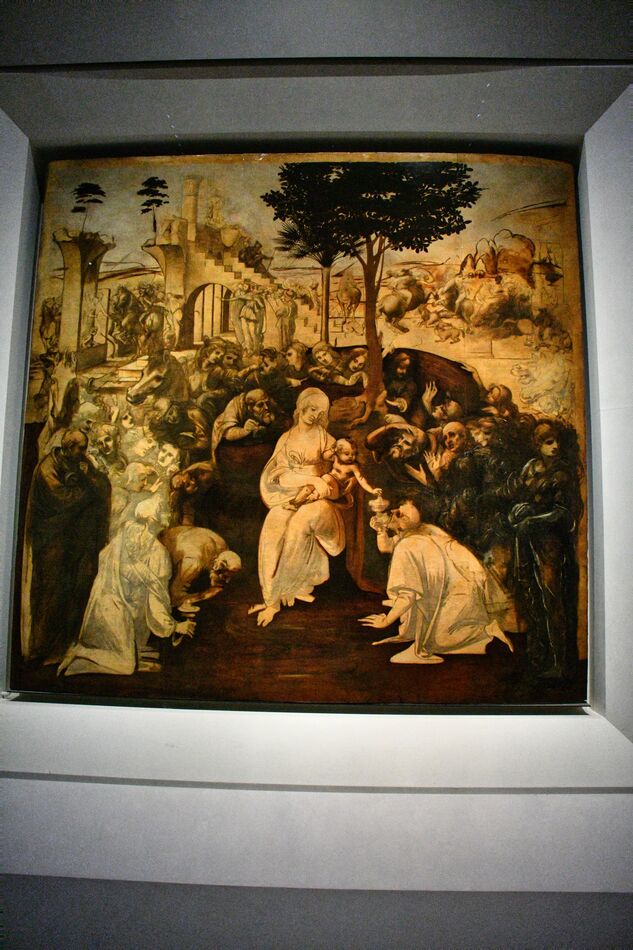
(Download)
Raphael, Portraits of Agnolo Doni and Maddalena Strozzi, ca1504
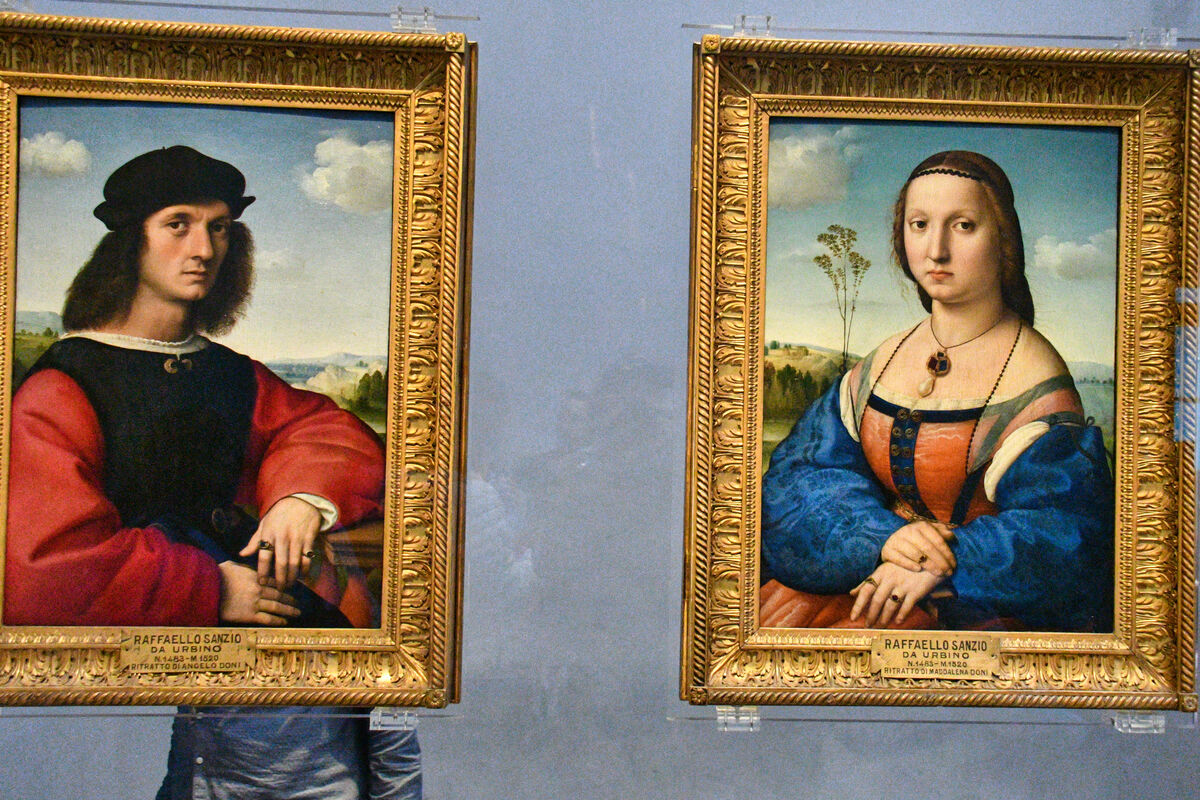
(Download)
Doni Tondo or Sacred Family (c. 1506-1508) is the only painting by Michelangelo in Florence and is considered one of the masterpieces of the 16th century Italian art.
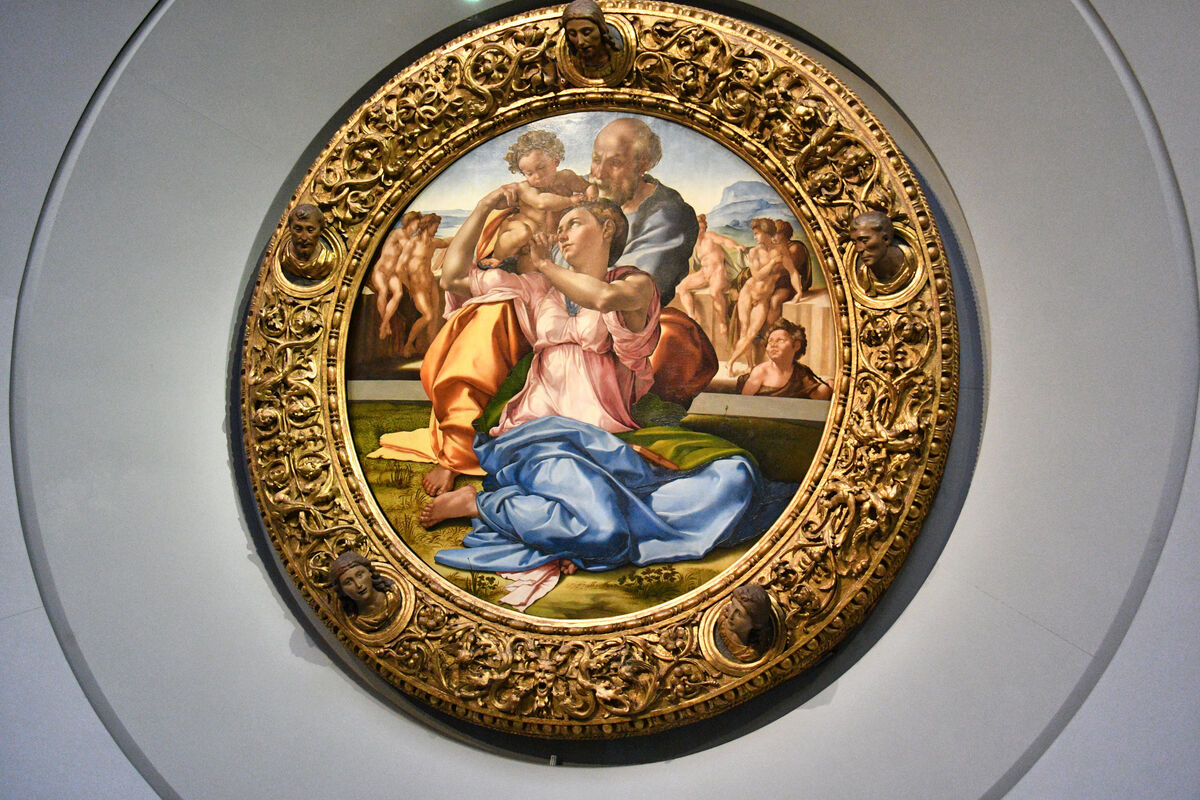
(Download)
The Madonna del Prato (Madonna of the Meadow), formally Madonna with the Christ Child and Saint John the Baptist, is an oil on board painting by Raphael, created in 1506
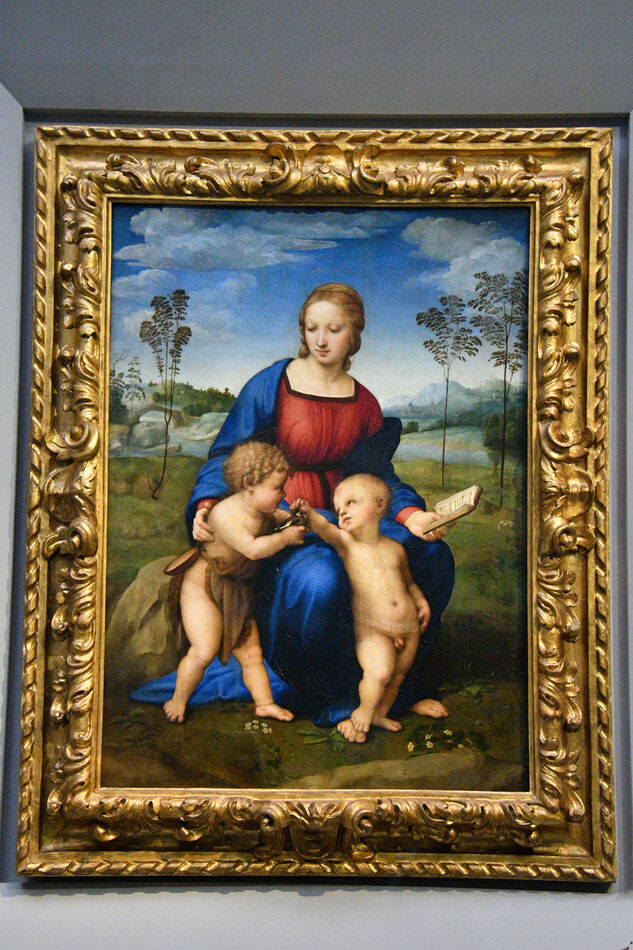
(Download)
Laocoön and His Sons, Marble copy by Baccio Bandinelli (Florence 1493 - 1560), has been one of the most famous ancient sculptures since the original was excavated in Rome in 1506
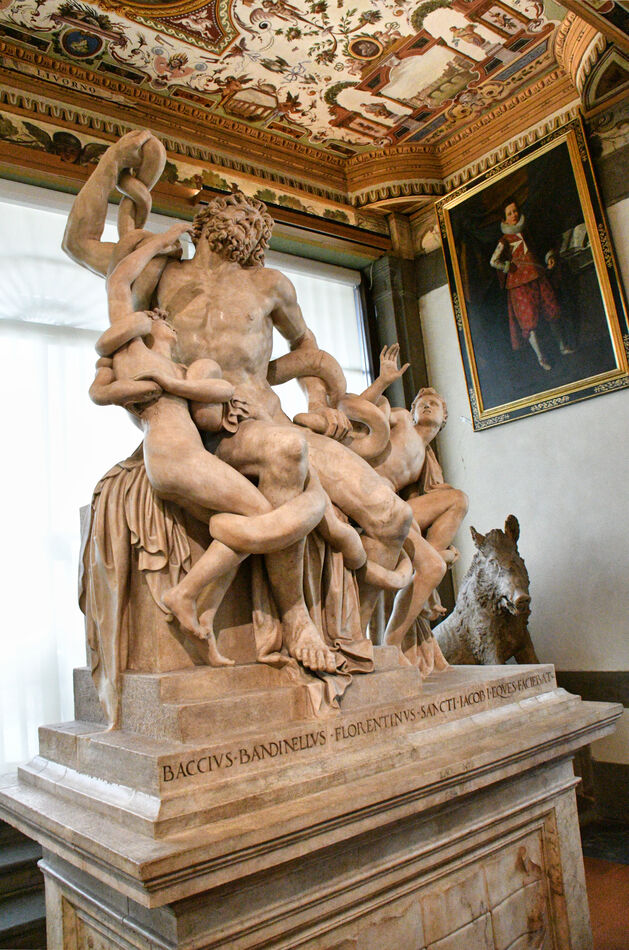
(Download)
Aug 25, 2023 14:25:50 #
Aug 25, 2023 14:30:21 #
Aug 25, 2023 15:02:33 #
Aug 25, 2023 16:15:07 #
Aug 25, 2023 16:15:30 #
Aug 25, 2023 16:18:32 #
Wow, seeing any one of those was worth the price of admission. Beautifully done, Mark; photos, captions and history. Thanks.
Aug 25, 2023 16:28:49 #
joehel2 wrote:
Wow, seeing any one of those was worth the price of admission. Beautifully done, Mark; photos, captions and history. Thanks.
Thank you so much Joe. It was really worh putting up with the crowds to see the masterpieces and I learned a lot by researching the history.
Aug 25, 2023 16:40:47 #
Beautiful result from your battle with the crowd, Mark! I must note that it has been three posts without your star.
Aug 25, 2023 19:03:30 #
UTMike wrote:
Beautiful result from your battle with the crowd, Mark! I must note that it has been three posts without your star.
Thanks very much Mike. She was really averse to posing in the museum but have patience, she'll be back!
Aug 25, 2023 22:28:06 #
You are fortunate to have seen all that great art, Mark. Nicely photographed, too.
Aug 26, 2023 06:50:43 #
Aug 26, 2023 07:12:19 #
Aug 26, 2023 08:17:14 #
Aug 26, 2023 09:39:21 #
If you want to reply, then register here. Registration is free and your account is created instantly, so you can post right away.

